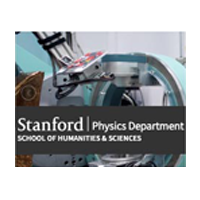
The fine structure of quantum spin ice
Hewlett Teaching Center, Rm. 201
Abstract: Condensed-matter systems provide alternative “vacua” exhibiting emergent low-energy properties dramatically different from those of the standard model. A case in point is the emergent quantum electrodynamics (QED) in the family of magnetic materials known as quantum spin ice. The emergent QED possesses many features familiar from our universe, such as charges, anti-charges and photons, but also many unfamiliar one, such as magnetic monopoles. Thus, these magnetic insulators provide a laboratory for exploring effective QED in regimes quite inaccessible to traditional Maxwell electromagnetism.
In this talk, I will review the beautiful picture of how QED emerges in these frustrated magnets. We will then turn to several results regarding its `fine structure'.
We will see that the fine structure constant 𝜶 -- the dimensionless coupling which controls the interactions between emergent light and charges -- generically takes values ~0.1 in quantum spin ice, much larger than the 𝜶 ~ 1/137 of our universe [1]. This leads to a variety of predictions regarding the coherent dynamics of the spinons which we expect can be probed by neutron scattering [2].
Finally, we will consider how true electric fields couple into this magnetic insulator -- and may permit the indirect observation of the emergent magnetic monopole and a curious 'inverted' Lorentz force [3].
[1] Pace, Morampudi, Moessner, Laumann. Phys. Rev. Lett. 127, 117205 (2021).
[2] Morampudi, Wilczek, Laumann. Phys. Rev. Lett. 124, 097204 (2020).
[3] Laumann, Moessner. arXiv:2302.06635.